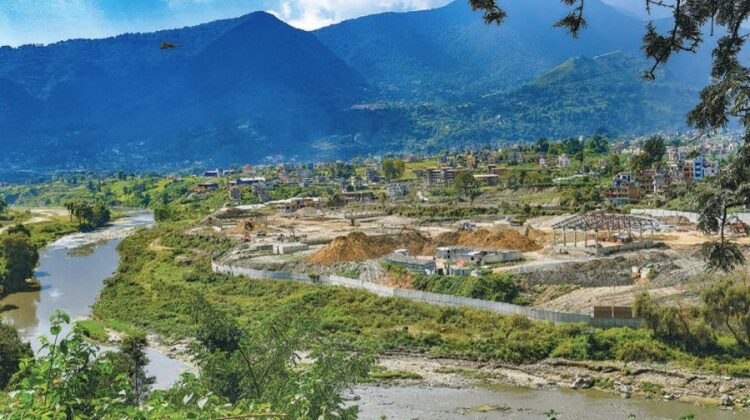
Chobhar dry port expected to be completed next month
The facility would allow importers to make customs clearance in Kathmandu and facilitate trade,officials say
The construction of key infrastructure has been completed. We are now doing homework for the operation modality,” said Ashish Gajurel, executive director of the Nepal Intermodal Transport Development Board, the government agency responsible for the construction and operation of the dry port.
“A tender will be called soon to invite potential bidders to operate it,” he said.
The facility will allow importers to make customs clearance in Kathmandu without having to go to the border checkpoint where their shipments entered Nepal.
“If traders are allowed to clear their goods in Kathmandu, it will make their life easier. They won’t have to pay demurrage charges if they fail to clear their dues on time. Hence, it will reduce import costs,” said Gajurel.
Importers have to pay a late fee if they do not take delivery of their goods and return the empty container by the stipulated date.
Traders have been facing difficulties while importing goods through different transit points largely due to strained infrastructure and documentation hassles.
Freight carriers entering Nepal through Bhairahawa are often stuck in massive traffic jams extending up to 10 km on the Indian side of the border due to lack of parking infrastructure.
Traders have been repeatedly asking the government to facilitate import and export by expanding the parking lot at Bhairahawa Customs as its infrastructure has become saturated.
According to traders, sometimes the line of trucks stretches 20 km on the Indian side.
Truck drivers often complain that they are forced to spend at least four days to get their cargo cleared. Traders are hugely concerned by the delays, and have started rerouting their imports.
They are hopeful that the Chobhar dry port will make things easier in many ways as the shipments can be transported directly to Kathmandu.
Naresh Katuwal, president of the Nepal National Traders’ Federation, said that the facility would ease trade. “If the imports are dispatched directly to Kathmandu, it will definitely reduce trade costs.”
In the fiscal year 2018-19, Nepal’s total foreign trade amounted to Rs1.51 trillion—imports of Rs1.41 trillion and exports of Rs97 billion.
Trade with India was valued at Rs980.65 billion—imports worth Rs917.92 billion and exports worth Rs62.73 billion.
Trade with China amounted to Rs207.62 billion—imports worth Rs205.51 billion and exports worth Rs2.10 billion.
During the same fiscal year, third country trade was worth Rs327.36 billion, according to the Department of Customs.
The customs infrastructure at Chobhar dry port is being built by the Nepal Intermodal Transport Development Board. It serves as a regulatory body, and work related to operation and management will be contracted to the private sector.
“The dry port will be operated by the private sector through a lease agreement,” Gajurel said.
According to Gajurel, Chobhar dry port sprawls over 230 ropanis and will be able to accommodate 600 containers and 400 goods carriers. There are three huge warehouses to store goods.
The inland port is being constructed by the government with a Rs1.70 billion loan from the World Bank, which is the estimated cost of the project, Gajurel said. The construction contractor is a Nepal-China joint venture.
Gajurel said a clash with locals which delayed the project by six months had been cleared. “There is no dispute now,” he said.
Prime Minister KP Sharma Oli laid the foundation stone on January 17, 2019 amid protests by locals that the government was using force to destroy a place of historical significance by building the facility.
Apart from the historical and religious aspects, the dry port is being built on the land formerly occupied by Himal Cement Factory, and a number of issues remain unresolved since it shut down.
The government has claimed that it has acquired 1,054 ropanis of land originally belonging to the now defunct cement factory. Of the total, 228 ropanis have been allocated for the construction of the dry port. The remaining 826 ropanis of land has been proposed to be developed as an international exhibition centre.
Locals said that the government had not acquired all the privately owned land. Former employees of the factory have their own complaints: The government has not paid the salaries of 416 employees for 19 months.
Most of the country’s imports are destined for Kathmandu, and the construction of the dry port will reduce costs for traders, the board said.
“The construction of the Kathmandu-Tarai Fast Track will make the operation of the dry port easier,” Gajurel said.
Source: The Kathmandu Post
